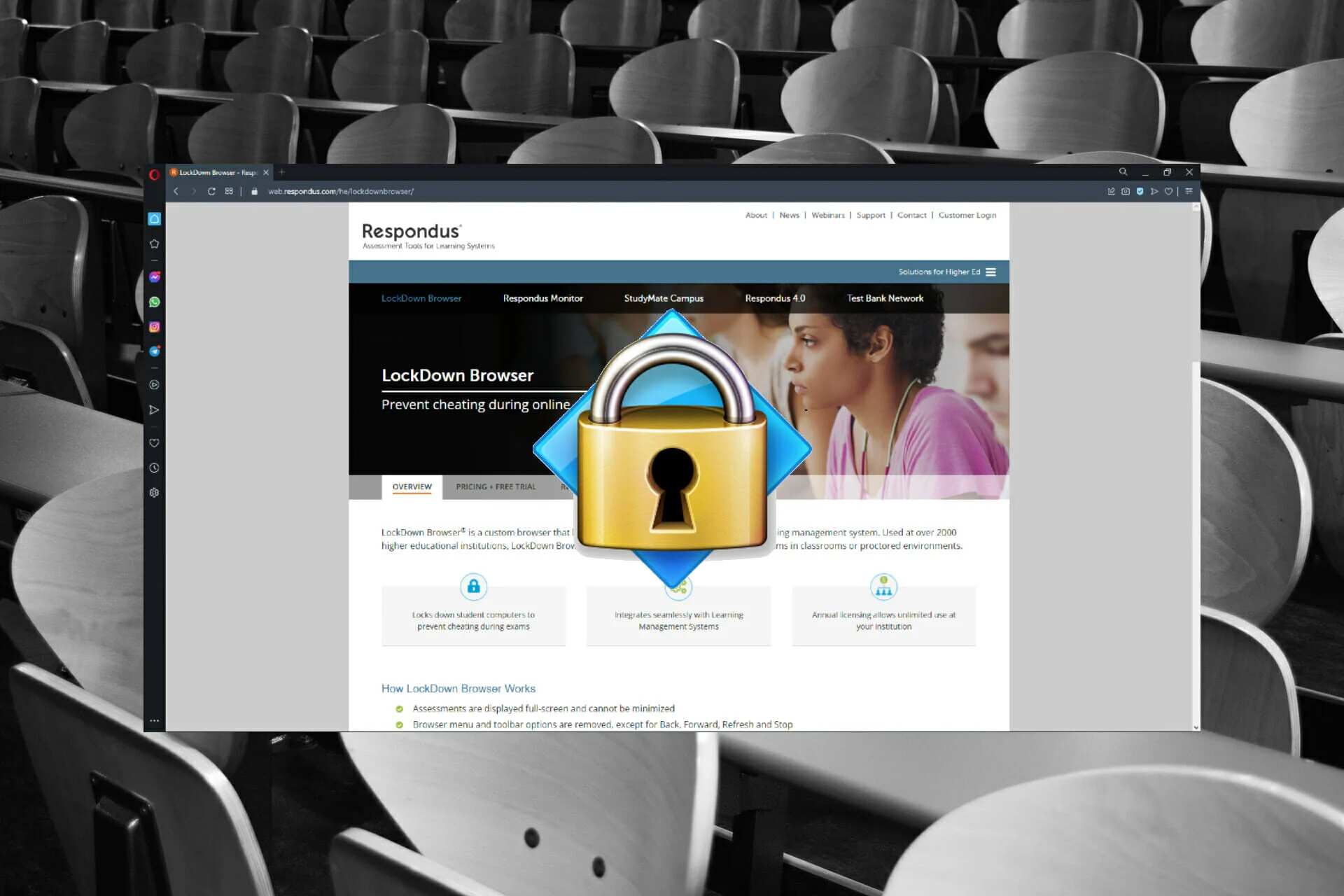Introduction
A web browser is an essential tool for navigating the vast realm of the internet. It acts as a gateway, connecting users to websites, web applications, and various online resources. Whether you’re searching for information, streaming videos, or shopping online, a reliable web browser is crucial for a smooth and enjoyable browsing experience.
Every day, billions of people across the globe rely on web browsers to access and interact with the online world. With a wide range of options available, each with its own unique features and capabilities, choosing the right browser can significantly impact your browsing efficiency and overall satisfaction.
In this article, we will explore what a browser is, how it works, and some of the popular web browsers currently available. We will also discuss the key features to consider when selecting a browser that aligns with your browsing needs and preferences.
So, let’s dive into the fascinating world of web browsers, starting with a basic understanding of what they are and why they are essential for our online activities.
What is a browser?
A browser, short for web browser, is a software application that allows users to access and view websites, web pages, and other online content. It serves as a bridge between the user and the internet, enabling the retrieval and display of information from the World Wide Web.
At its core, a browser acts as an interpreter, taking HTML (Hypertext Markup Language) and other web programming languages, and rendering them into visually appealing and interactive web pages. It interprets the code and translates it into a format that can be understood and displayed by the user.
But a browser is more than just a translator of code. It is a multifunctional tool that provides several essential features to enhance the browsing experience. Browser functionality includes handling and rendering text, images, videos, and audio files, as well as executing scripts, managing cookies, and supporting various web technologies.
Furthermore, a browser enables users to navigate through the internet by allowing them to enter website addresses, known as URLs (Uniform Resource Locators), into the address bar. It also provides features like bookmarks, tabs, and history, which help users organize and revisit their favorite websites.
Web browsers also play a crucial role in securing users’ online activities. They incorporate security measures such as encryption protocols, warning mechanisms for malicious websites, and private browsing modes to safeguard user privacy and protect against cyber threats.
Overall, a browser is a fundamental tool that enables users to explore, interact with, and make the most of the vast resources available on the internet. Its ability to interpret and display web content in an accessible and user-friendly manner makes it an indispensable part of our digital lives.
How does a browser work?
While using a web browser may seem straightforward, it involves a complex process that takes place behind the scenes. Understanding how a browser works can provide insights into its functionality and help users make the most of their browsing experience.
When a user enters a URL or clicks a link in a web page, the browser springs into action. Here’s a simplified overview of the steps involved in how a browser works:
- The browser sends a request to the web server hosting the website identified by the URL. This request is made using the HTTP (Hypertext Transfer Protocol) or HTTPS (HTTP Secure) protocol.
- The web server receives the request and processes it, fetching the necessary files and data required to display the web page.
- The server sends the requested files, typically written in HTML, CSS (Cascading Style Sheets), and JavaScript, back to the browser in response to the initial request.
- The browser receives the response from the server and begins parsing the HTML code to understand the structure and content of the web page.
- The browser starts fetching additional resources linked within the HTML, such as images, videos, stylesheets, and scripts, sending additional requests to the server for each resource.
- Once all the necessary resources are fetched, the browser combines them to render and display the complete web page on the user’s screen.
- The browser then executes any embedded JavaScript code, enabling dynamic interactivity and functionality on the web page.
Additionally, modern browsers utilize caching mechanisms to store certain elements of a web page, such as images and stylesheets, for faster loading times when revisiting the same page.
Browsers also employ rendering engines, which are responsible for interpreting and displaying the HTML, CSS, and JavaScript code. Popular rendering engines include Blink (used by Chrome and Opera), WebKit (used by Safari), and Gecko (used by Firefox).
With each new browsing session and page visit, the browser repeats this process, allowing users to seamlessly navigate through the vast landscape of the internet.
Common web browsers
There are several web browsers available today, each offering unique features, speed, security, and compatibility with various operating systems. Here are some of the most popular and widely used web browsers:
- Google Chrome: Developed by Google, Chrome is known for its speed, simplicity, and compatibility. It offers a clean and user-friendly interface along with a vast ecosystem of extensions and apps.
- Mozilla Firefox: Firefox is an open-source browser that prioritizes privacy and customization. It is known for its robust security features, extensive add-on library, and support for web standards.
- Apple Safari: Developed by Apple, Safari is the default browser for macOS and iOS devices. It is known for its speed, energy efficiency, and seamless integration with Apple’s ecosystem.
- Microsoft Edge: Edge is the successor to Microsoft’s Internet Explorer and offers a fast, secure, and user-friendly browsing experience. It comes preinstalled on Windows 10 devices and is also available for macOS, iOS, and Android.
- Opera: Opera is a feature-rich browser that focuses on speed, security, and efficiency. It offers a built-in ad blocker, VPN, and a range of customization options.
- Brave: Brave is a privacy-focused browser that blocks ads and trackers by default, providing users with a faster and more secure browsing experience. It also has a unique reward system that allows users to earn cryptocurrency by opting into privacy-respecting ads.
These are just a few examples of popular web browsers, but there are many others available, each with its own strengths and weaknesses. It’s important to choose a browser that suits your needs, considering factors such as speed, privacy, security features, compatibility, and additional functionalities like extensions and developer tools.
Web browsers constantly undergo updates and improvements, so it’s a good idea to regularly check for updates to ensure you’re using the latest version for optimal performance and security.
Ultimately, no single browser is perfect for everyone, as preferences vary among users. It’s recommended to try out different browsers and see which one aligns best with your browsing habits and requirements.
Features of a web browser
Web browsers are equipped with a range of features designed to enhance the user experience and provide convenient ways to navigate the internet. While each browser may have its own unique set of features, there are some common features that are found in most web browsers. Here are some key features to look for:
- Tabbed browsing: Tabbed browsing allows users to open multiple web pages within a single browser window, making it easier to switch between different websites without cluttering the desktop.
- Bookmarks: Bookmarks or favorites allow users to save the URLs of their frequently visited websites, making it easy to access them with a single click.
- History: The history feature keeps a record of the websites you have visited, allowing you to revisit and locate previously viewed pages quickly.
- Download manager: A download manager enables users to efficiently download files from the internet, providing options to pause, resume, and manage downloads.
- Extensions and add-ons: Many browsers offer extensions or add-ons that expand the functionality of the browser. These can range from ad blockers and password managers to productivity tools and custom themes.
- Private browsing: Private browsing, also known as incognito mode, allows users to browse the internet without storing any browsing history or cookies on their device. This can be useful when using a shared computer or if you want to maintain privacy.
- Customizable interface: Some browsers offer options to customize the browser’s appearance, such as changing the theme, layout, or toolbar arrangement to suit individual preferences.
- Security features: Browsers incorporate various security features to protect users from online threats. These may include pop-up blockers, phishing and malware protection, and warning mechanisms for insecure websites.
- Synchronization: Many modern browsers provide synchronization across multiple devices, allowing users to access their bookmarks, history, and preferences seamlessly across desktop and mobile devices.
- Developer tools: Developer tools are built-in features that enable web developers to inspect and debug web pages, analyze network requests, and test and optimize web performance.
These are just some of the common features found in web browsers. It’s important to consider which features are essential for your browsing needs and choose a browser that offers the functionality you require.
Keep in mind that new features and improvements are regularly introduced in web browsers, so staying updated with the latest versions can ensure you have access to the most advanced and secure browsing experience.
How to choose a web browser
Choosing the right web browser can greatly impact your browsing experience, as each browser offers different features, speed, security, and compatibility. Here are some factors to consider when selecting a web browser:
- Operating system compatibility: Check if the browser is compatible with your operating system, whether it’s Windows, macOS, Linux, or mobile platforms like Android or iOS.
- Speed and performance: Look for a browser that offers fast page loading times and efficient overall performance, enabling you to browse the web smoothly.
- Security and privacy: Consider the browser’s security features, such as built-in protection against malware, phishing, and dangerous websites. Look for options that prioritize user privacy and offer features like private browsing and tracking protection.
- User interface: Evaluate the browser’s user interface and ensure it is intuitive and easy to navigate. Customizability and a clean design can enhance the overall browsing experience.
- Extensions and add-ons: If you rely on specific extensions or add-ons for tasks like ad blocking, password management, or web development, check if the browser supports them or has a rich library of available extensions.
- Synchronization: If you use multiple devices for browsing, consider a browser that offers synchronization features. This will allow you to access your bookmarks, history, and preferences seamlessly across devices.
- Community and support: Evaluate the user community and support available for the browser. Look for a browser that has an active community forum or support system, as it can be helpful when troubleshooting issues or seeking assistance.
- Developer tools: If you are a web developer, consider a browser that offers robust developer tools, such as inspection and debugging capabilities, network analysis, and performance optimization features.
- Updates and compatibility: Check how frequently the browser is updated to ensure it remains compatible with the latest web standards and security protocols.
- User reviews and recommendations: Read user reviews and recommendations to get insights into the experiences of others. Consider their feedback and weigh it against your own preferences and needs.
It’s important to remember that there is no one-size-fits-all browser. The best browser for you will depend on your specific requirements and preferences. Consider experimenting with different browsers to find the one that aligns most closely with your needs.
Ultimately, the goal is to choose a browser that offers a seamless, secure, and enjoyable browsing experience, allowing you to fully explore and make the most of the vast resources available on the internet.
Conclusion
Web browsers are indispensable tools for accessing and navigating the vast world of the internet. They act as gateways, connecting users to websites, web applications, and online resources, and offering a range of features to enhance the browsing experience.
In this article, we explored what a web browser is and how it works. We discussed the essential features to look for when choosing a browser, such as speed, security, compatibility, and customization options. We also mentioned some of the popular web browsers available today, including Google Chrome, Mozilla Firefox, Apple Safari, Microsoft Edge, Opera, and Brave.
When selecting a web browser, it’s important to consider factors such as operating system compatibility, performance, security features, user interface, extensions and add-ons, synchronization capabilities, developer tools, and community support. By evaluating these aspects, you can choose a browser that aligns with your browsing needs and preferences.
Remember that no single browser is perfect for everyone, as individual preferences and requirements may vary. It’s recommended to try out different browsers and see which one suits you best. Additionally, staying up to date with the latest browser versions can ensure you have access to the most advanced and secure browsing experience.
Whether you’re surfing the web for work, entertainment, or information, choosing a reliable and efficient web browser can make a significant difference in your online journey. So, explore the options, find the browser that meets your needs, and embark on a seamless and enjoyable browsing experience.

























